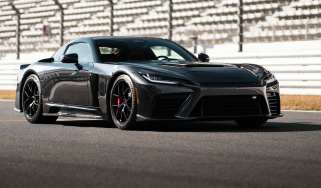Verstappen dominates F1 and Ferrari dominates Le Mans – 2020s motorsport so far
The 2020s have so far seen the rise of Max Verstappen as an all-time great F1 driver. Likewise Ferrari's return to and domination of Le Mans
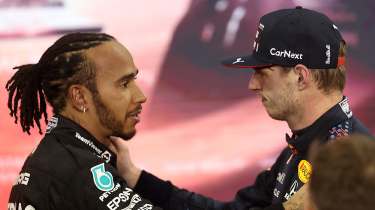
If the first half of the 2020s can be defined by one rivalry, it’s that of Max versus Lewis. Not since Senna v Prost has there been a more intense and divisive clash. Whether you tune in for the dazzling driving or bitter recriminations, theirs has been a battle for the ages.
The records show that Hamilton began the new decade as he finished the old one, winning his seventh World Championship title in a Covid-shortened season of crushing superiority for Mercedes that saw the Brit win 11 of the 17 Grands Prix. His teammate, Valtteri Bottas, scored two wins and nine podiums to take second in the Championship. Meanwhile Verstappen also took two wins and nine podiums to finish just nine points shy of the Finn.
> Are classic cars as good as we remember them?
Depending on your allegiance, 2021 either saw Verstappen take his first World Championship title, or race director Michael Masi rob Hamilton of his eighth. What’s beyond dispute is that 2021 was a truly epic season. Perhaps the greatest in the history of the sport.
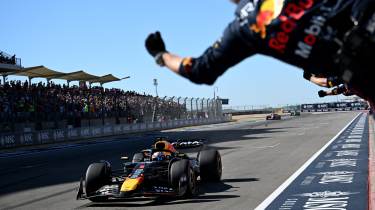
After controversial crashes between the main protagonists at Silverstone and Monza, the season was always poised to go to the wire, but not even Brad Pitt could have scripted things better, the pair arriving in Abu Dhabi tied on points ahead of the final race. Verstappen emerged victorious, but the outcome will forever provoke heated debate.
From that point, Verstappen became imperious, maximising his opportunities as Red Bull’s Newey-designed cars became all but unbeatable. Conversely, Mercedes lost its mojo in a major way. The decline ultimately led to Hamilton leaving the team after 11 seasons to join Ferrari. Meanwhile, McLaren (led by bullish team boss Zak Brown) mounted one of the greatest comebacks in recent memory, with the Woking squad transformed from donkeys to ass-kickers in the space of a few seasons.
Now, with Hamilton suffering an agonising existential crisis at Ferrari and Verstappen having to outdrive his less-than-stellar Red Bull in order to fight for podiums, the title clash is between McLaren’s Lando Norris and Oscar Piastri. They’re playing nicely for now, but if neither manages to build a decisive points gap there will surely be fireworks in the second half of the season.
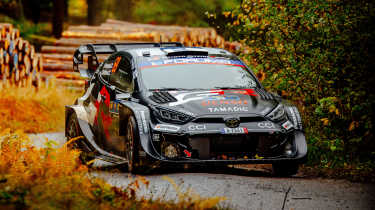
While F1 has been enjoying an unprecedented phase of popularity and truly extraordinary revenues, thus far the 2020s have not been a vintage decade for the World Rally Championship. The high-downforce cars (now stripped of the hybrid powertrains introduced in 2022 to save money) are as spectacular as ever, but increasing costs and uncertain regulations have led to a lack of manufacturer support.
On the flipside, while a lack of mainstream media coverage means older fans are less likely to engage, WRC’s global audience has grown and the calendar now includes many new host countries, including Paraguay and Chile. Unfortunately for British fans, the WRC hasn’t included a Rally GB since 2019, and that was confined to Wales. There are optimistic noises about the event making a return in 2027, this time using a network of stages in Scotland, but much depends on funding and regional support. It would certainly be a boost for Welsh ace Elfyn Evans, who has been consistently fighting for WRC title wins and would be a real home hero to root for.
At least the endless run of wins by Sebs Loeb and Ogier have been replaced by a period of more open competition. True, Ogier won the WRC drivers’ title in 2020 and 2021, both times driving for Toyota (whose Yaris WRC is pictured left), but Finland’s Kalle Rovanperä then took back-to-back titles in ’22 and ’23, once again for Toyota.
Tragically, 2023 was marred by the death of Irishman Craig Breen, who crashed during pre-event testing for the Croatia Rally. The part-time factory Hyundai driver was a bright talent with six second-place finishes to his name; 2023 would surely have seen him take his first WRC victory, but fate decided otherwise.
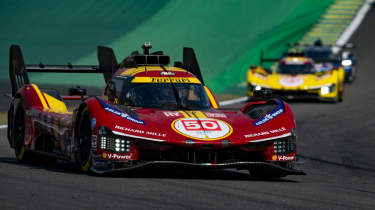
The World Endurance Championship is one category with no shortage of manufacturer interest. As of the 2025 season no fewer than nine manufacturers are actively participating across the Hypercar class and rejigged LMGT3 categories, with more pledged to join.
It’s a remarkable turnaround from the aftermath of Dieselgate, when WEC saw both Audi and Porsche withdraw from the top class of the series, leaving Toyota as the only manufacturer team. The Japanese brand duly won the Le Mans 24 Hours five years on the bounce, from 2018 until 2022, but since 2023 it is Ferrari that has taken endurance racing’s greatest prize.
> Were the 2000s and 2010s the performance car sweet spot?
This remarkable hat-trick comes in one of the most competitive periods in WEC’s history, confounding the best efforts of serial winners Porsche and Toyota, plus ultra-serious efforts from Alpine, BMW, Cadillac and Peugeot. This year Aston Martin also made a return to the top category with independent team THOR.
The magnificent-sounding V12 Valkyrie AMR‑LMHs are the only non-hybrids in the series so currently lack outright pace, but they are still in their first year. Here’s hoping further development, and maybe some help via WEC’s Balance of Performance system, will see the green cars challenge for wins before the decade is out.


